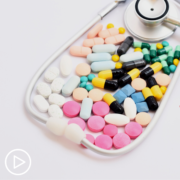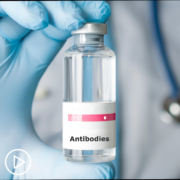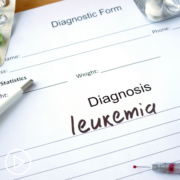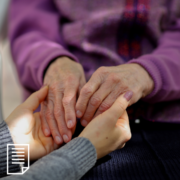What You Should Know About DLBCL Treatment Side Effects
What You Should Know About DLBCL Treatment Side Effects from Patient Empowerment Network on Vimeo.
Once a patient begins diffuse large B-cell lymphoma (DLBCL) treatment, what side effects could they experience? Dr. Kami Maddocks, reviews potential side effects and how they may be managed.
Dr. Kami Maddocks is a hematologist who specializes in treating patients with B-cell malignancies at the The Ohio State University Comprehensive Cancer Center – The James. Learn more about Dr. Maddocks.
See More From The Pro-Active DLBCL Patient Toolkit
Related Programs:

|

|

|
Transcript:
Katherine:
What are the side effects that patients can expect with these treatments?
Dr. Maddocks:
So, when they get the treatment, on the day they get it, there can be an infusion reaction to the rituximab or antibody therapies. So, the first treatment, that treatment is given very slowly and titrated up. If patients have a reaction, we stop it, treat the reaction, and then they’re able to continue therapy but again, that first day, it can take several hours for that one antibody to get in. And then, later, therapies are given at a more rapid pace.
So, about 70 percent of people who react, it can be really almost anything. Some people get flushing, some people will get a fever, some people –have shortness of breath or their heart rate will go up.
Katherine:
Okay. All right. Any other side effects?
Dr. Maddocks:
Yeah. So then chemotherapy is meant to kill cells during the cell cycle. So, cancer cells divide more rapidly, chemotherapy is targeting them, but it also effects good cells in the body, specifically those that divide at a more rapid pace. The biggest risk of chemotherapy is infection.
So, it effects the good white blood cells that fight infections. It can affect your red cells that carry your iron, gives you your energy. Or your platelets which help you to clot or not bleed when you get caught. So, infection is the biggest risk of chemotherapy. So, usually, with this regimen, that infectious risk is highest within the second week of treatment, that treatment is given every three weeks.
So, we tell patients they should buy a thermometer, check their temperature, they have to notify their doctor or go to the ER if they have a fever. Besides infection, there’s a small percentage of patients who might need a transfusion. GI toxicity. So, nausea, vomiting, diarrhea, mouth sores, constipation, all of which we have good treatments for. So, we give medication before chemo to try to prevent people from getting sick and then give them medicine to go home with, if they have any nausea. We can alter those medications as time goes on, if they’re having any problems. So, we just need to know about it. Most patients will lose their hair with this regimen.
It can affect people’s tastes, it can make their skin more sensitive to the sun, and then, less common but potential side effects are it can cause damage to the nerves. Or something we call neuropathy, which most often patients will start with getting numbness or tingling in their fingers and toes, and we can dose adjust if that’s causing some problems.
And then, there’s a risk to the heart with one of the drugs. So, the heart should pump like this. The heart pump function can go down. So, we always check a patient’s heart pump function before they get their chemo, to make sure that they’re not at higher risk for that to happen.
Katherine:
So, all of these approaches are used in initial treatment?
Dr. Maddocks:
Mm-hmm.
Katherine:
Okay.










